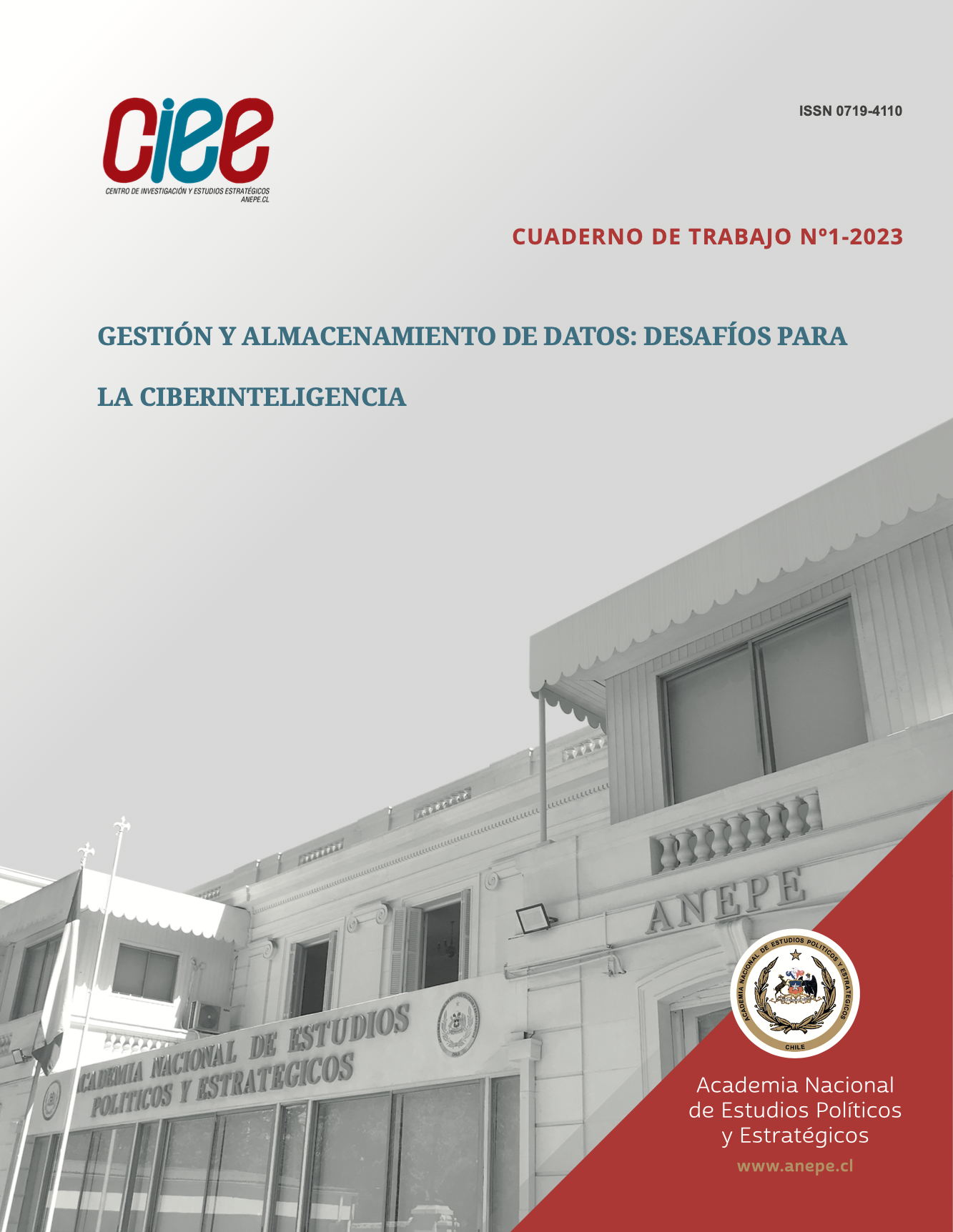DATA MANAGEMENT AND STORAGE: CHALLENGES FOR CYBER INTELLIGENCE
Main Article Content
Abstract
As information takes on an increasingly leading role in the society-technology rela-tionship, the need to generate, process and store data in greater quantities and with greater effectiveness increases. But with this increase in data demand for the functioning of modern society, the amount of erroneous, false, expired and/or irrel-evant data also increases. This data “waste” causes difficulties on various levels: from slowing down query times to databases, to increasing digital storage costs, to name a few cases. This study addresses the problems that this phenomenon poses for the field of cyber intelligence, analyzing some solutions observed in various or-ganizations, and projecting possible future paths regarding this issue.
Article Details
Downloads

This work is licensed under a Creative Commons Attribution-NoDerivatives 4.0 International License.
Los autores mantienen en todo momento los derechos sobre sus respectivos artículos, por otra parte, la Revista Cuaderno de Trabajo está distribuida bajo una Licencia Creative Commons Atribución 4.0 Internacional.
References
Bartlett, J. (2017). La Red Oculta. Planeta Publishing.
Bonfanti, M. E. (2018). Cyber Intelligence: In pursuit of a better understanding for an emerging practice. Cyber, Intelligence, and Security, 2(1), 105-121.
Botelho, B., & Bigelow, S. J. (2022, January 5). What is Big Data and why is it im-portant?. Data Management. https://www.techtarget.com/searchdatamanagement/definition/big-data
Cyber threat intelligence: How to stay ahead of threats. Agari. (2021, May 18). https://www.agari.com/blog/what-is-cyber-threat-intelligence
Data graveyards: Challenges and risks – Data Privacy manager. Data Privacy Manager. (2020, August 11). https://dataprivacymanager.net/data-graveyards-challenges-and-risks/
Gillis, A. S. (2021, March 24). The 5 V’s of big data. Data Management. https://www.techtarget.com/searchdatamanagement/definition/5-Vs-of-big-data
Gormley, C. J., & Gormley, S. J. (2012). Data hoarding and information clutter: The impact on cost, life span of data, effectiveness, sharing, productivity, and knowledge management culture. Issues in Information Systems, 13(2), 90-95.
Instituto de Ingeniería del Conocimiento. (2016, November 29). Infografía Big Data: las 7 V. Instituto de Ingeniería del Conocimiento. https://www.iic.uam.es/innovacion/big-data-infografia-7-v/
Marshall, E. (1997). Ethics in science: Is data-hoarding slowing the assault on pathogens?. Science, 275(5301), 777-780.
McKellar, K., Sillence, E., Neave, N., & Briggs, P. (2023). Digital accumulation be-haviours and information management in the workplace: exploring the tensions between digital data hoarding, organisational culture and policy. Behaviour & In-formation Technology, 1-13.
Sedera, D., & Lokuge, S. (2018, January). Is digital hoarding a mental disorder? Development of a construct for digital hoarding for future IS research. In Proceed-ings of the 39th International Conference on Information Systems (ICIS 2018). Uni-versity of Southern Queensland.
Taylor, P. (2022, September 8). Total Data Volume Worldwide 2010-2025. Statista. https://www.statista.com/statistics/871513/worldwide-data-created/
TechNewsDaily. Kushima.org. (2013, March 28). http://www.kushima.org/?p=812
Walsh, S. (2021). Between the spreadsheets: Classifying and fixing dirty data. Facet Publishing.
